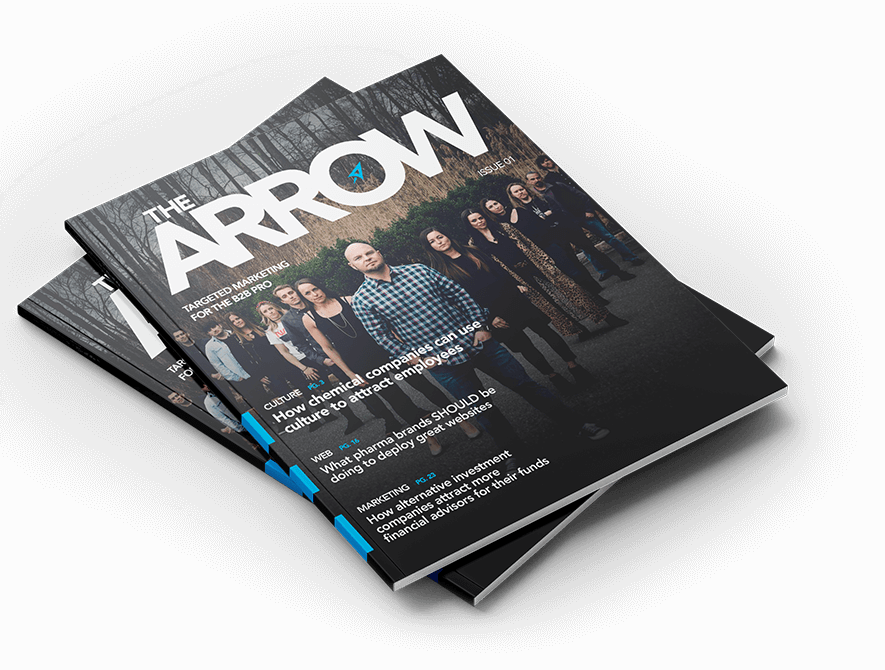How You Could Be Losing Visibility When Choosing Hashtags For Instagram In 2022
Chris Mulvaney is the CEO of CMDS. I make things... I’m the creative entrepreneur with passion for (re)making brands and inventing solutions to problems no one knows exist.
Love them or hate them, hashtags aren’t going anywhere. You’ll find them all over the place on different social media platforms, especially Instagram which arguably is the most important.
If you clicked on this article, it means you are probably looking to optimize your content so your Instagram account is the best it can be. We’re here to help you achieve it!
When choosing hashtags for Instagram, there are a bunch of different details and nuances that most people tend to not focus on or even know about to begin with.
To properly use hashtags on Instagram you should go through the basics first. This way you understand how they work and benefit your account when used correctly.
In this article, you will learn about: hashtag groups, why you should consider using them in 2022, how to choose the best hashtags for your business, how to use hashtags to engage with communities relevant to your brand, and much more!
Let’s dive deep into it. By the end of the article, you’ll be a bonafide hashtag expert for Instagram in 2022.
What Are Hashtags
What Are Hashtags
This is the starting point of learning anything. You have to understand what it is before we talk about the tips and secrets you want to know when choosing the right hashtag for Instagram.
In essence, a hashtag is a combination of the “#” symbol followed by numbers, letters, or emotes. Their main goal is to organize or categorize content to make it easier for people to find when searching for that word.
These keywords can be clicked on or searched for in order to view all of the content that uses that same hashtag. This makes it easy to find the content you’re looking for or, at the very least, is in the same realm. Let’s use “sushi” as an example.
By clicking on #sushi, you can view a vast number of posts from people who took a picture of sushi or at least something related to that word.
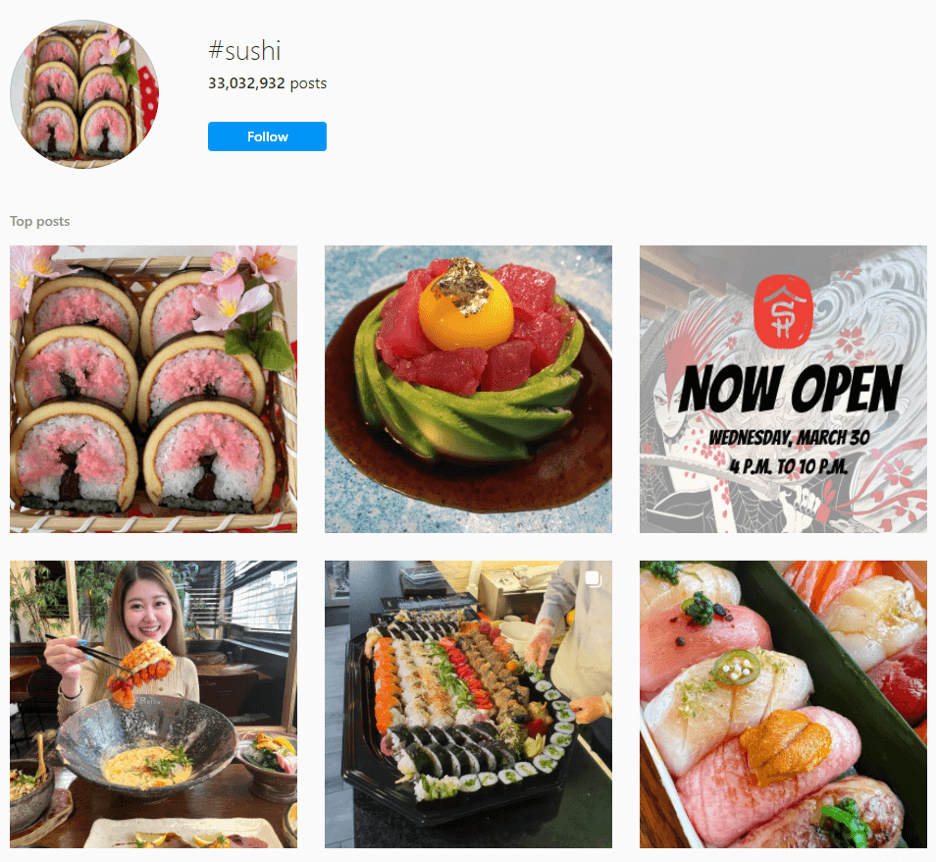
Remember that on Instagram you can also add hashtags to your stories as a floating sticker. You can move them around and put them in a place to draw attention to content or hide something.
Another very good feature to keep in mind when thinking about hashtags is the ability to follow them like you would follow an account. It helps you see what type of content people are adding to said hashtag without having to go and search for it all the time. This way you have the content directly on your feed.
You can create your own custom hashtag that you can use for your content and encourage similar accounts or followers to use it on posts they are making about your brand or a product.
The beauty of hashtags lies in the versatility they have and the many different ways you can use them. They are a great tool to reach more people or to consume content from a very specific niche like #sushi.
All of this being said, one of the biggest issues that Instagram has been looking to solve is the abuse of hashtags that have nothing to do with a post and are used just to gain visibility. With hashtags such as #like4like you get people to like your content and you like their content back. This is similar to what #follow4follow is.
Ok, so now that we got the basic concept down, you might want to know the real reason why using hashtags is important for every single piece of content that you make.
Why Even Use Hashtags in 2022?
Why Even Use Hashtags in 2022?
Think it about this way: there are millions of accounts on Instagram at this point. There is a crazy amount of content being pushed out daily and it makes it easy for people to not even notice a post if it doesn’t catch their eye. Hashtags make it easier for people to find your content if they are interested in the hashtag itself.
While hashtags don’t increase engagement per se, they can help organize your content so that people, who use the same hashtag, might see it on the hashtag page.
Let us show you this simple example. Imagine Instagram is a huge library and all of the books are posts from different accounts. What would happen if all of those books were just shoved on shelves without a care in the world about their topics or genres?
You would be correct in assuming that it would be really hard to find a book a user cares about. Now, imagine how that same library would look if it was organized by genre or, in our case, by hashtags. Suddenly the whole library seems very clean and put together. Best of all, it’s super easy to find the content you’re looking for just by searching for the hashtag you want.
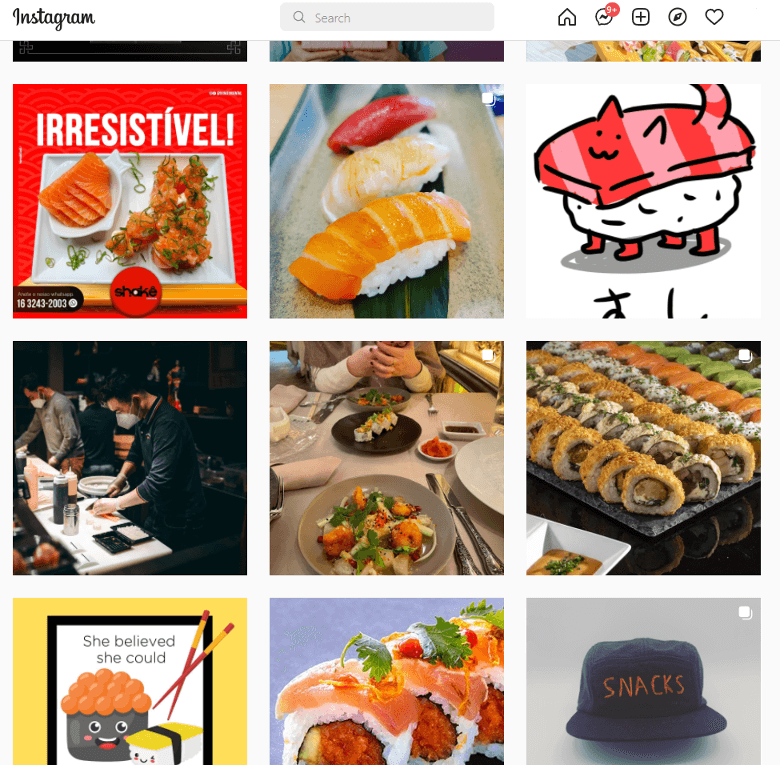
Your content won’t be shown widely to people if you don’t use hashtags. Basically, it’s free exposure at the cost of knowing and investigating which hashtags to use beforehand.
Hashtags are there to organize the content on social media and your job is to properly tag them on your posts as long as they are related to your content topic. Otherwise, you’re wasting your time and not doing anything at all.
Hashtags should also be unique to each post you make, so don’t try to reuse the same ones on all of your content. Instead, give it some thought after you finish the caption and see what your content is talking about and which hashtags would really fit.
Choosing hashtags for Instagram might be a bit complicated if you don’t know what you’re looking for or if you don’t know which ones might benefit your posts. So let’s explain the process of picking hashtags and how to find the perfect ones.
Choosing Hashtags For Instagram The Easy Way
Choosing Hashtags For Instagram The Easy Way
This is the biggest step to consider when thinking about hashtags. While having a decent amount of hashtags is good, you want all of them to be linked in some way to your content. Otherwise, you’re wasting a hashtag slot by adding a random one.
While common sense might lead you to pick the most popular hashtags in order to get more views, choosing them has the complete opposite effect, even if your post is related to the topic.
Why? Well, it all boils down to the amount of posts that are being published while using that hashtag and the number of accounts with high engagement that are prominently featured on the hashtag page. Let’s face it, the competition is fierce!
Instead of picking extremely popular hashtags, you want a good mix, ranging from decently popular to niche. This way you will have an easier time standing out in the sea of content being posted on a regular basis.
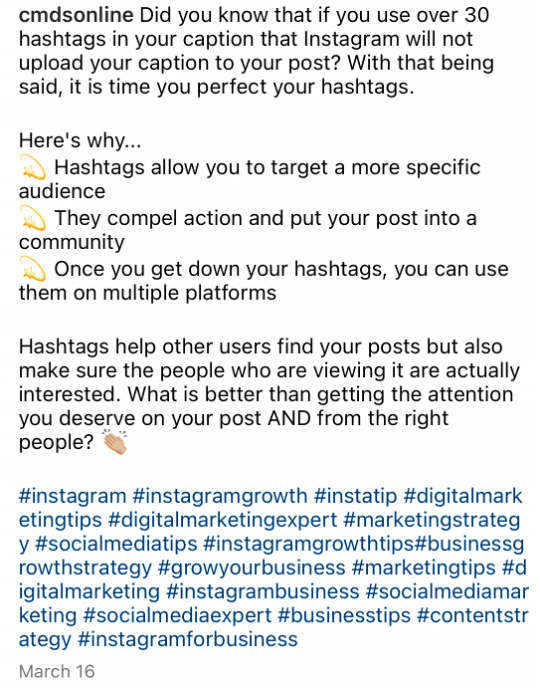
This all sounds easy to do, but how do you go about finding the hashtags themselves and knowing which are popular and which aren’t?
There are two ways you can do this. First, there is the hands-on approach where you check every single hashtag you add to assess its relevance. This is also when you brainstorm possible hashtags that could fit the topic of your post. Or, another approach is using an app that picks the hashtags for you depending on the post and topic it recognizes.
We personally think that a mix of both is the best way to go about it if you value your time and your social media presence.
Let’s explore an example with a popular hashtag tool called Display Purposes.
This app lets you pick up to 3 words you consider relevant for the piece of content you’re about to publish and searches for the best hashtags in order of relevance to each word.
This is how the page looks when starting out, and, as you can see below, it has a black bar identifying the space where your 3 words should be.
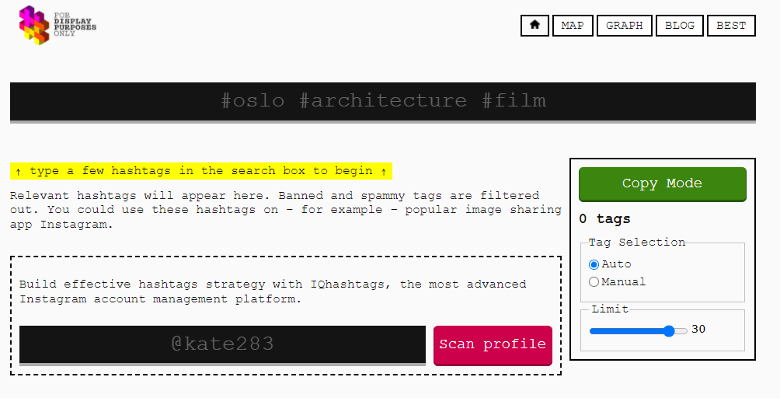
All you have to do is add the three main hashtags you would use on the post. For this example, let’s imagine our post is about social media tips. Our 3 main hashtags would be social media, marketing, and sales.
This will provide you with a list of hashtags the app automatically picks. While this is fine, you can see that there’s a button on the right that lets you set it to manual mode. This enables you to pick the hashtags you want from the list generated by Display Purposes.
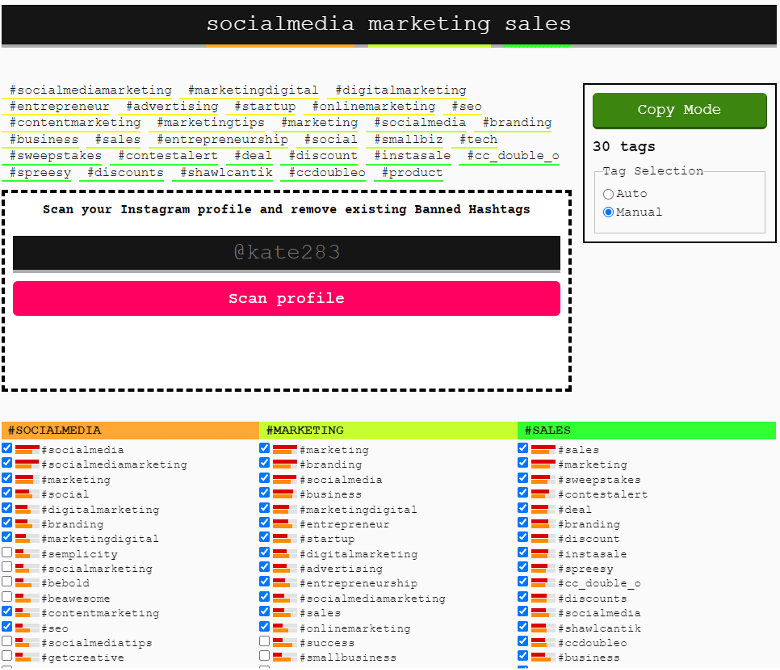
This is how the list looks right after you add the key hashtags. As you can see, it searches by engagement and relevance and chooses the top results. If we leave it as it is, it would be ok. But there are a few hashtags we ideally don’t want to see in the mix. So let’s clean up the selected hashtags to make them as personalized to the post as possible.
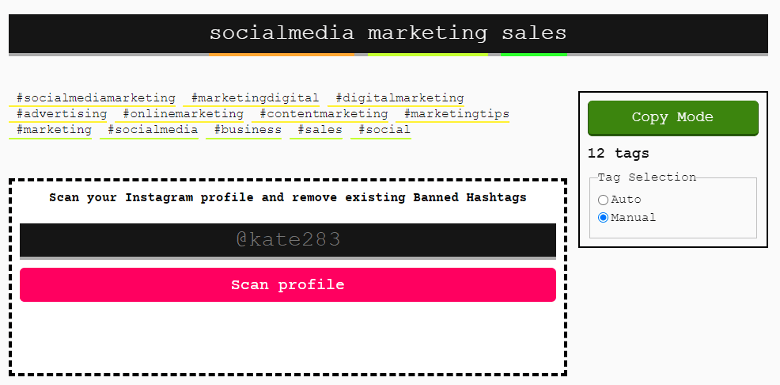
You might be a bit surprised at the number of hashtags that we took out. Well, a lot of those hashtags didn’t really have anything to do with our post. A hashtag like #sweepstakes, for example, wouldn’t work because we aren’t doing any. Neither would #entrepreneur work because we’re a social media agency.
Remember that your goal when searching for different hashtags isn’t to cram in as many hashtags as possible, but to instead pick the ones that have the most to do with your post. It doesn’t matter if it’s only 10 hashtags as long as they are deeply rooted in your content.
Always steer clear of hashtags such as #like4like or #follow4follow since all they do is provide you with fake followers and likes. They don’t do anything for your brand. If anything, they get your insights a bit dirty since there will be likes, comments, and follows from accounts that don’t care about your content at all.
Don’t go overboard with the hashtags. If there is no other hashtag you could think of to add to your post and you still have room, leave it as is. It’s far better than cramming it full with hashtags that have nothing to do with your content.
Another important point to consider when choosing hashtags is that it’s ok to share hashtags between posts. When we say you should customize your posts so they have personalized hashtags that fit the content, we don’t mean you can’t use those hashtags on other posts.
It’s completely normal for you to reuse hashtags since your account most likely follows a theme. That being said, try to not use the same ones consistently on all of your posts.
Instagram Stories are popular, image-based content. As the name implies, they tell your followers a story. Did you know that you can tag your stories with hashtags?
The biggest difference between stories and other Instagram content is that you don’t want to use 20 hashtags. It’s just way too much. Instead, you want to add no more than two.
Too many hashtags on a post honestly don’t look great. If anything, they look clunky. A quick tip is that you can hide hashtags by shrinking them and putting a sticker on top. This is easy to do and it’s very likely there’s a sticker you can use for just about any story post you have.
So we covered how to search the hashtags you want to use, but did you know there are differences between hashtags themselves? Let’s talk about it.
Types of Hashtags
Types of Hashtags
It’s weird to think about hashtags being grouped into different categories. But, after all, that’s the goal. We’re going to explain why there are groups and why you should care about at least one of them no matter what type of content you make.
Branded Hashtags
These are hashtags mostly used if you’re looking to make content for a specific company, if you have a partnership with them, or even if you want to get noticed by the brand.
This is kind of like what user-generated content (UGC) is for a brand since you’re making content based on their product or service
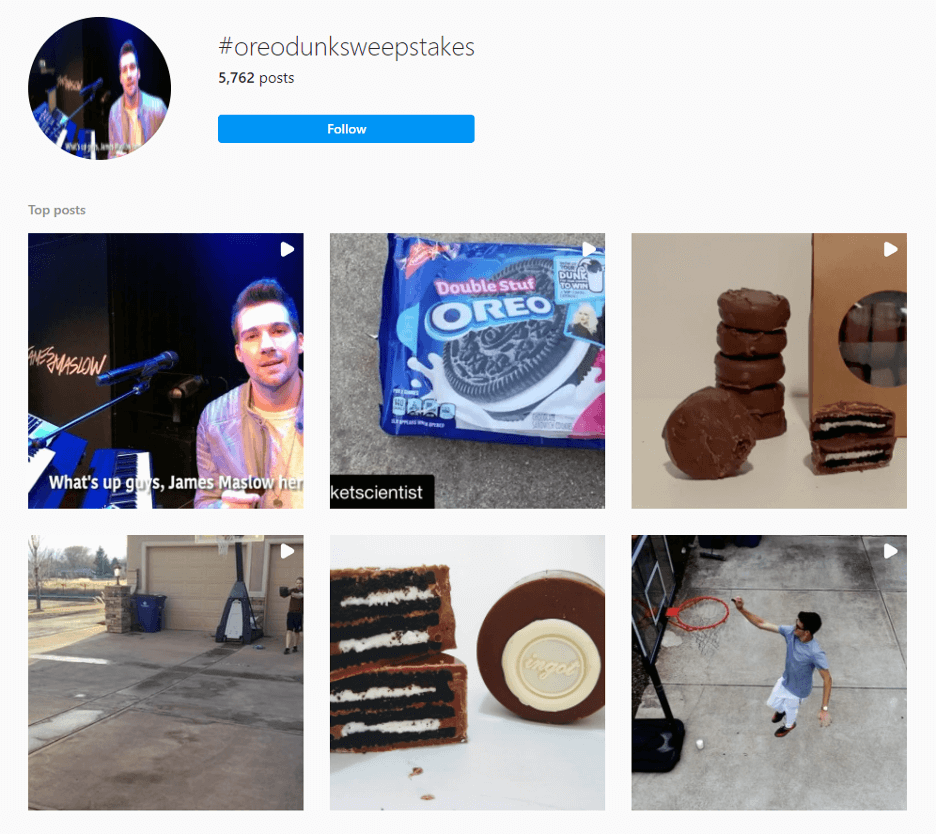
A good way to interact with people interested in the same brand is by following the branded hashtag, engaging in conversations, and commenting on their posts. Since you both share a very similar interest, the likeliness of a meaningful follow is very likely.
A good example of a brand constantly pumping out branded hashtags for their community to use is Oreo. They have had a plethora of branded hashtags throughout the years. They have used #OreoHorrorStories, #OREODunkSweepstakes, #PlayWithOreo, and many others in the past as a way to incentivize their community to make content with them.
Location Hashtags
This one is easy to understand. Yes, we know that you might be thinking that putting the geolocation tag AND a hashtag of your location might be a bit too much. But when you have a few free hashtag spots, it doesn’t hurt to add them.
This works well for brands that have a physical shop. It can help more people find their location when they search for the hashtag on the explore page.
Instagram Community Hashtags
This type of hashtag is used mostly to find a community that focuses on a very specific thing you like. It can be just about anything as long as it abides by the Instagram community guidelines.
They are very niche, so the competition is scarce. This is great if your account has something of value to provide to that community.
It takes more looking around and digging to find the right community hashtag since they are small, so let us give you a good tip!
Look for brands or accounts similar to your niche and check their hashtags. More times than not, they will have a hashtag that relates to your account and that is small enough to be considered a community hashtag.
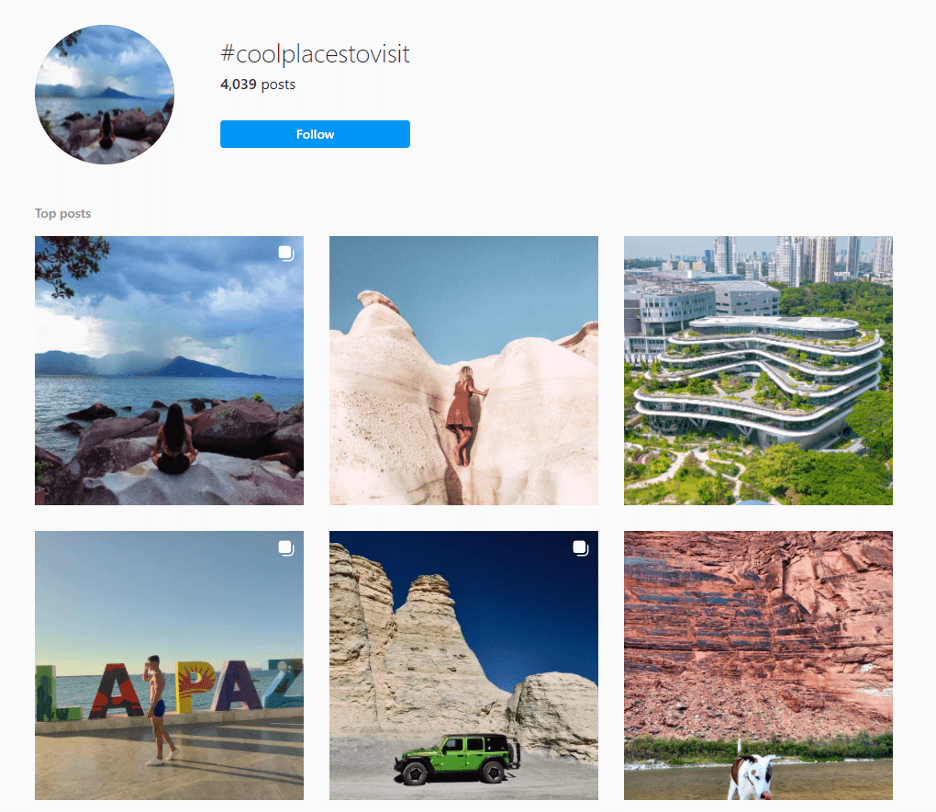
This saves you the hassle of going through a bunch of hashtags, trying to find a community hashtag of your own.
Try to engage as much as possible with people using these hashtags since they’re easier to keep track of. They also function the same way branded hashtags do. It’s a very niche interest, which makes it a lot easier to engage with them genuinely.
Industry Hashtags
These types of hashtags are massive and super popular with a very high competition rate. This is because of the number of posts that use these hashtags every single day.
They are very general and fit into a variety of posts like #marketing or #chef. Go and check how many people have used #chef on their posts. Spoiler alert: It’s in the millions.
While it is unlikely for you to stand out amongst the sea of content creators, it helps to at least use one industry hashtag to throw your content out there and battle it out with hundreds if not thousands of other accounts.
Niche Hashtags
These are hashtags that are very specific to a particular niche. While not as widely used as industry hashtags, they offer the benefit of it being only for people who are seriously interested in your niche as a whole.
Let’s say you’re a custom keyboard company that makes keyboards for gamers. While #gaming is an industry hashtag because of the versatility and the frequency of posts being made daily. However, the hashtag #gamingkeyboard is a niche one due to it being very specific to your company.
These hashtags mixed in with a couple of industry ones will, without a doubt, be your bread and butter for all of your content on Instagram. That being said, make sure to use the other hashtag types, if possible. Using a combination of these types of hashtags can benefit your posts and make it easier for you to think of new hashtags to add to your content.
All of this information is great, but what happens if you use too many hashtags? Well, to avoid that happening, let’s talk about the ideal amount you should be using.
How Many Hashtags Should You Use?
How Many Hashtags Should You Use?
This is a popular topic that has been talked about for years, especially since everybody has their own take on the perfect amount of hashtags your post and stories should have. In reality, the only rule you have to abide by is no more than thirty hashtags for a post and no more than ten for a story.
Apart from that, it’s all up to you. We personally like to stay below twenty hashtags on a post and have no more than three hashtags for stories. Honestly, it’s more than enough when it comes to hashtags for 99% of the content you make. The point here is that you don’t want to overdo it.
Same as with anything regarding social media, you want to be testing and changing things up to see what works better for your account. Remember that not all accounts are equal since they are in different niches and provide content for a different demographic. When it comes to how many hashtags, we recommend you try different amounts and see which number works best for you and with what combination of hashtags.
How to Pick the Right Hashtags
How to Pick the Right Hashtags
This is a complicated topic to talk about, especially since your account and niche are unique. What your brand might need right now is different from what another brand might require.
The best idea is to use a hashtag tool, like the one we mentioned previously, to help guide you to the hashtags you might want to be using. After that, we recommend exploring accounts that are similar to yours inside the industry and see which hashtags they use.
If any hashtags seem like a good fit and have a decent amount of people posting with them, then consider giving it a try on a couple of your posts.
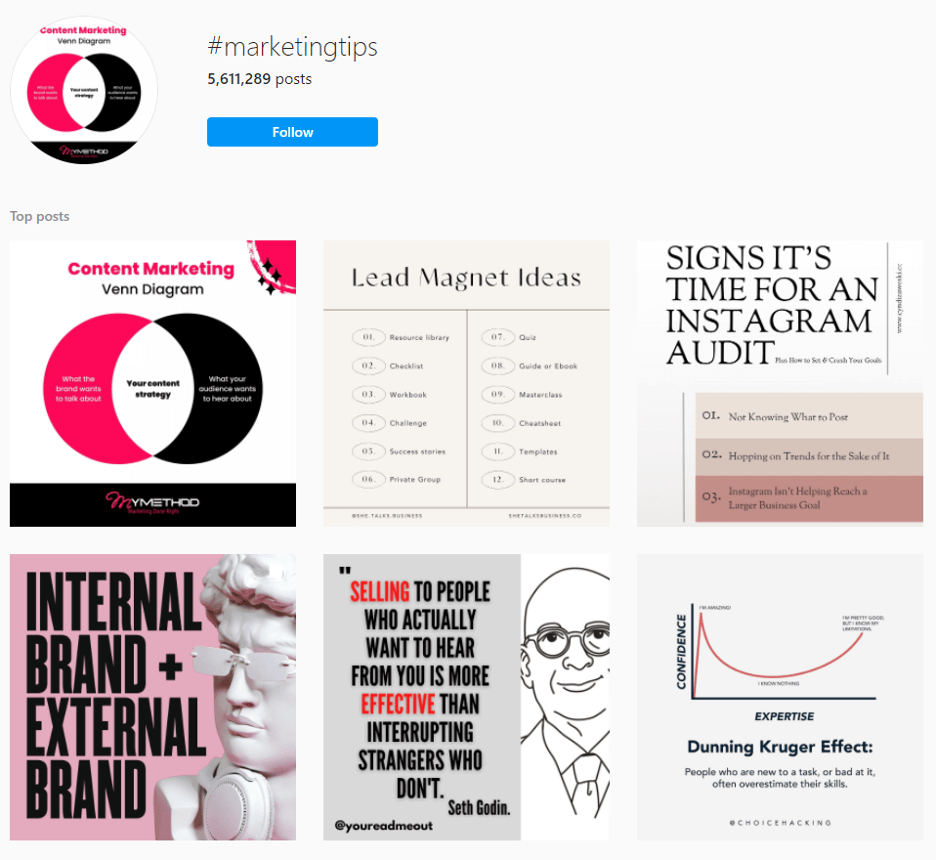
Another good idea is to take the time to investigate potential hashtags by using the explore tab. You can search for a keyword that is important to your business and find all of the hashtags that use that word.
A good tip is to check the related hashtags feature that can be found when you check any hashtag. This is great because it dives deeper and helps you find those niche hashtags you want to be using for your account.
Remember you want a good mix of industry, niche, and community hashtags for your posts.
Hide Hashtags on Posts and Stories
Hide Hashtags on Posts and Stories
We briefly discussed how to hide hashtags earlier in the article, but let us talk about it more in-depth here.
Even if you only have 15 hashtags, it’s sometimes weird to just have them in the middle of your caption. It can be distracting to users when there’s a blue block of text. Not only that but it doesn’t look great, either.
There are two popular ways to hide hashtags on your posts and we’re going to go over them now.
The first method is to use your comment section as the place to put all of your hashtags. This ensures your caption is clean and there’s no distracting blue font in the middle of it all.
You would have to post a comment on your content with all of your hashtags added.
The second method is to separate your caption from your hashtags by using a period per line. This does two things: number one, it separates the hashtags altogether from your post without really taking them out, and, two, it causes the caption to display the read more button. This means the hashtags won’t be visible at all unless people go out of their way to click on read more.
Instagram has said that both options are perfectly fine and work exactly the same. So you have the option to pick which one you like more. We prefer the dots in the caption since it leaves the comment section completely clean and invites people to engage with us.
Give both of the options a try, see which one you like the most, and stick to it. If in the future you want to change it up, you can do so anytime.
How To Find Hashtags That Work For Your Brand
How To Find Hashtags That Work For Your Brand
This is the meat and potatoes of the article and what you’ve probably been waiting for the most. This is where you’ll get all of the best information tailored-made for you. Well, hashtags are very specific to your account, as we mentioned previously, but we’re going to make it a lot easier for you to find the hashtags you might be lacking.
Let’s start by simply looking for niche and community hashtags for your account that you can swap and use whenever you want. We can also use this as an opportunity to engage with the other users who have posted there in the past.
Go and write down the first 5 words that come to mind when you think about your account (or your brand, if you have one), now go to the explore page and search for the first word to find a hashtag.
Look at how many posts there are and make sure to check the related hashtag tab that appears when you click on the main hashtag.
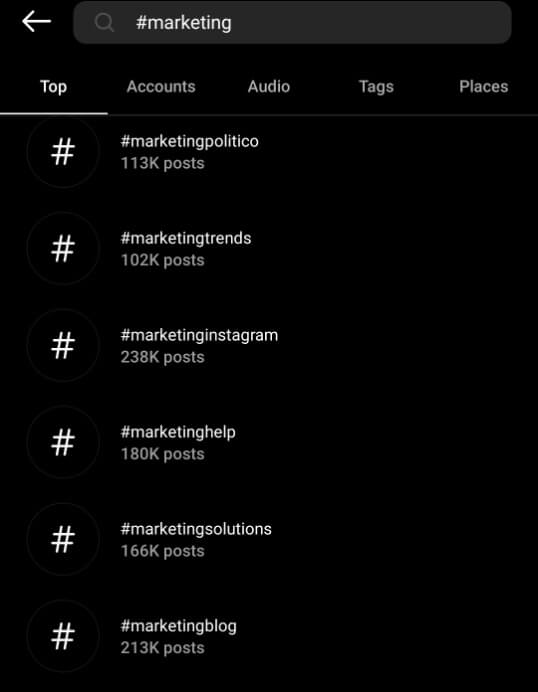
Write down any potential hashtag that has to do with your brand and that you could see yourself using on a post. Even if you won’t be using all of the hashtags you wrote down on a post, you can still use them to engage with people from a niche that you know a lot about.
While it does take time out of your day to comment and engage in direct messages with various accounts in your industry, it will be a hundred times better than just commenting on random posts with an industry hashtag. Why? Because they are more likely to follow you since your account has something to do with the niche they post content in.
This is an amazing opportunity for you to gain followers who truly care about what you have to say and who will engage with your content to give their opinions on it. This is the ideal follower you want: a user who likes and engages with your content consistently and is willing to share it with friends who might enjoy it and become followers as well.
Being able to target communities with the power of hashtags is such an easy and great way to get followers nowadays. All it takes is quick hashtag research.
Now that you have all of these niche and community hashtags, you can start to rotate them in your posts as you see fit. These will be perfect when combined with the industry and larger niche hashtags you used to look for them.
Be sure to also look at the suggested hashtags from an Instagram tool, like Display Purposes. It will probably provide you with a hashtag that is very good for your account that you may not have noticed when searching for them on the explore pages.
Now it’s just a matter of engaging with the communities and using the hashtags on all of your content while making sure you’ve chosen the right ones.
Measure Hashtag Performance
Measure Hashtag Performance
You now have a complete set of hashtags for your business and everything looks ready to go. But how do you measure their performance? Funny you should ask, we were just about to start talking about it.
The first thing we want you to check on your account is if it’s in professional mode or not. If it isn’t, let us explain why you should have it.
The professional mode gives you access to insights, which is Instagram’s fancy way of referring to metrics. This is huge since it lets you check all of your important engagement metrics, like comments, shares, profile link clicks, and so much more.
A very good metric that they also offer and which we are looking at right now is the hashtag metric. This number indicates how many people have seen your post or posts just from hashtags alone. While it doesn’t specify from which hashtag you get more views, it is a very good way of knowing if the hashtags are doing their job or not.
With this metric, you can play around with your hashtags to see which combination yields you the most results. We will say this again and keep on saying it as many times as needed. You need to run tests on social media to see what works and what doesn’t.
While we can give you the step-by-step guide to growth on Instagram, the entire process is very unique to each individual in terms of who to DM, who to engage with, the hashtags you want to be using, and many other details.
Use the hashtags you researched previously and change them up to check how each group performs is very similar to what A and B testing with ads are. So if you know how to make ads or you’re looking to get into it, this type of knowledge is great for you.
Make sure to write down which combination has yielded the most results and use it on important Instagram content like reels, video posts, and carousels that you want the most engagement on.
Make Sure They Are Relevant
Make Sure They Are Relevant
You always have to make sure that the hashtags you are using are alive. What do we mean by that? It means with a community that uses the hashtag at least three times daily. Why? Because you won’t gain much views or traction from a hashtag that is only used once every week. While we suggest you look for community hashtags that are very specific to a niche, we don’t encourage you to find the ones that are so specific and small that they don’t have consistent usage.
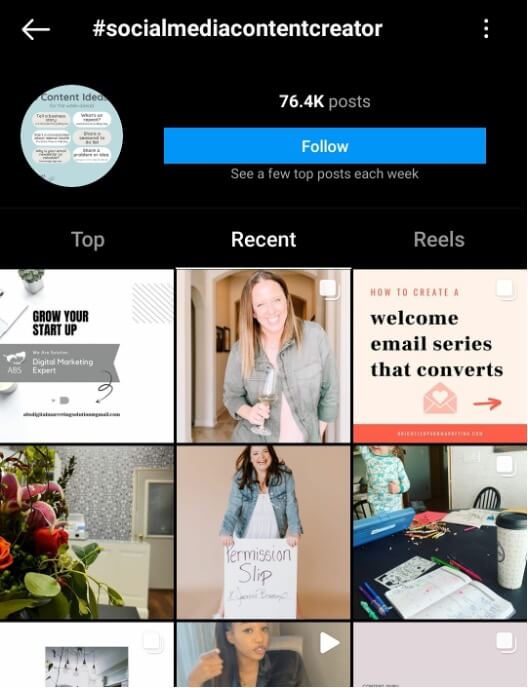
You want to look for that perfect middle ground between the hashtag not being super competitive and it still being relevant enough that it gets used daily.
Finding 20 hashtags like this is nearly impossible. We suggest you do a combination of all of the types of hashtags we’ve been talking about in this article and take the most advantage of the hashtags like the ones mentioned above.
As your account grows and the engagement increases, you can start looking for hashtags with higher relevance since you’re more likely to be featured prominently on the hashtag page.
This means higher total engagement from your hashtags. But when should you make the leap into using more relevant hashtags?
Great question! You might know the answer by now, but if you don’t, let us enlighten you.
You need to test and see how your content and metrics do when posting content with them in your caption. If you can consistently appear on the featured page of the hashtag, then it’s safe to say you can move up to a more relevant hashtag in your industry.
Be Careful When Picking Hashtags
Be Careful When Picking Hashtags
This should go without saying but when choosing a hashtag, you should be sure that it has to do with your account. It can’t be looked at in a weird or confusing way. Let us explain.
In the past, hashtags were used either for branded content or for regular purposes where the combination of words or the acronym utilized was either inappropriate or just made the brand look bad.
A good example of this is #nowthatchersdead a hashtag that was easy to read incorrectly and that caused a lot of drama due to some people reading “Now That Cher’s Dead” instead of “Now Thatchers Dead.”
This caused a huge uproar and thousands of people started mourning the death of Cher when, in reality, it was just a case of bad hashtag wording.
Another example that is just as problematic as bad wording is not doing your research when using a hashtag.
ALWAYS check the hashtag you are using, even if you made it up. Otherwise, something like what happened to Lululemon could happen to you.
The brand Lululemon decided to use the hashtag #WTFSept or “What The Focus September” in their campaign for Instagram to sell their athletic yoga products. While it was meant to be a normal made-up hashtag by Lululemon, it turned out to be a hashtag used as a memorial for the 9/11 attacks.
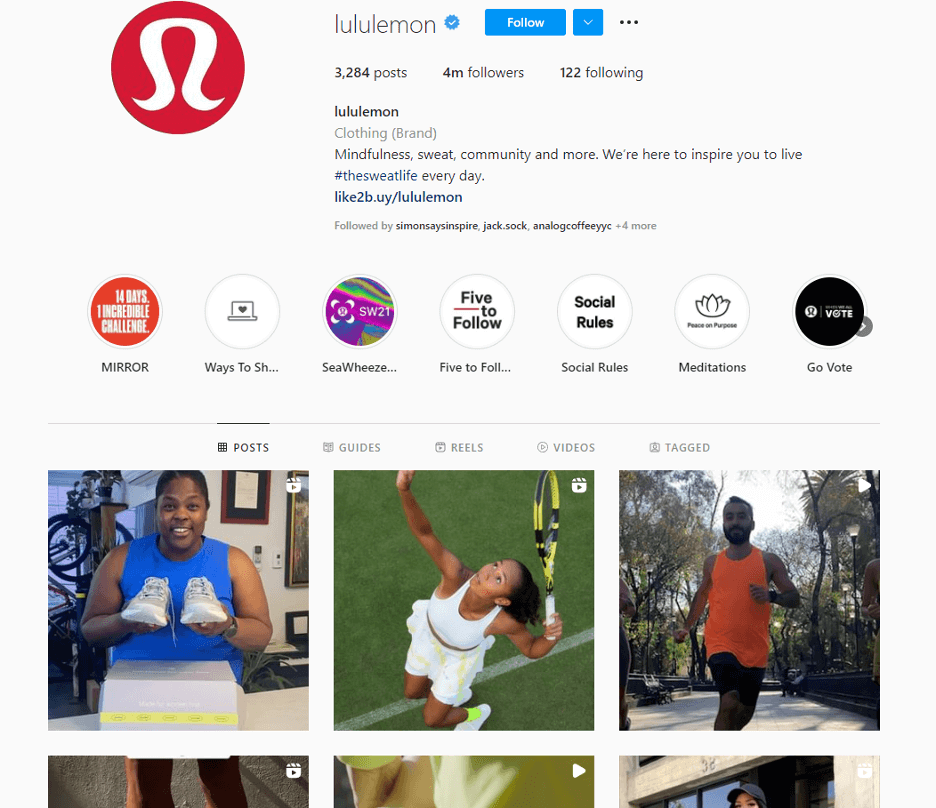
Now imagine how the brand looks to the public eye when they are posting yoga poses and pics of their products alongside pictures and videos of memorials for 9/11. Needless to say, it caused quite a stir.
This is why you want to research your hashtags before using them on your content. Don’t only research them on Instagram, make sure you check all of the other social media platforms, just in case.
Otherwise, you might think it’s safe to use everywhere and it destroys your brand just because the hashtag meant something else on another social media platform.
Conclusion
Conclusion
So we went through a small masterclass on hashtags where you learned just about everything you should know about them for Instagram.
Let’s do a quick recap to make sure you retain as much information as possible.
You learned what a hashtag is and why it’s so important for Instagram (remember the library). You also learned the importance of finding the right hashtags for your brand.
We mentioned hashtag groups and how not all hashtags are made for the same reason. We also gave you a quick tip you can use to hide hashtags on both your posts and your stories to get your account looking as clean as possible.
We then talked about the importance of finding hashtags that fit your brand both to engage in the community and to use in posts.
Last but not least, we talked about how vital it is to research your hashtags before using them to avoid a social media disaster like the one Lululemons went through because of the lack of research.
If there’s something we want you to take from this article, it’s to test as much as possible and make sure you’re always trying to improve the quality of your hashtags. This can be done by using different combinations or adding new hashtags into the mix.
Never stop testing new combinations and checking what works the best for your content.
If you have any hashtag-related questions, make sure you leave them down below and we’ll answer them for you!
Always remember, when choosing hashtags for Instagram, pick quality over quantity. It’s better to have 10 hashtags that represent your brand as a whole than 30 hashtags that have nothing to do with it.
Now, it’s time for you to stop reading and start researching the best possible hashtags for your business.



